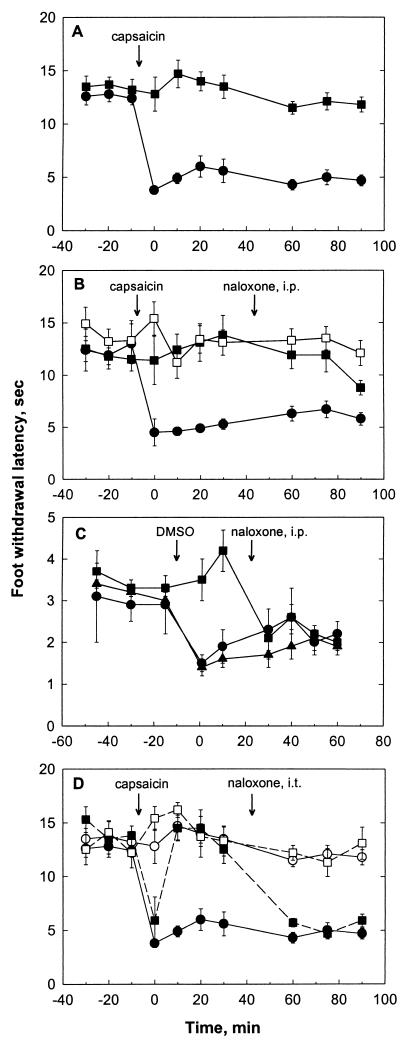Figure 4.
Foot withdrawal responses to noxious radiant heat. Animals were infected unilaterally with either KHZ or KHPE. Topical capsaicin (A, B, and C) or DMSO (C) was applied to the infected foot as indicated. Data are presented as mean ± SEM, n = 6–8. (A) Response to a low rate of skin heating, preferentially activating C nociceptors. ●, KHZ-infected animal, ipsilateral foot; ■, KHPE-infected animal, ipsilateral foot. (B) Response to a low rate of skin heating. Naloxone (50 mg/kg i.p.) was administered where indicated. ●, KHZ-infected animal, ipsilateral foot; ■, KHPE-infected animal, ipsilateral foot; □, KHPE-infected animal, contralateral foot (no capsaicin applied). (C) Response to a high rate of skin heating, preferentially activating Aδ nociceptors. ●, KZ-infected animal, ipsilateral foot; ■, KHPE-infected animal, ipsilateral foot; ▴, uninfected animal. (D) Response to a low rate of skin heating. Naloxone (1 mg/kg intrathecally) was administered where indicated. KHZ-infected animal (solid line): ●, ipsilateral foot; ○, contralateral foot (no capsaicin applied). KPE-infected animal (broken line): ■], ipsilateral foot; □, contralateral foot (no capsaicin applied).

